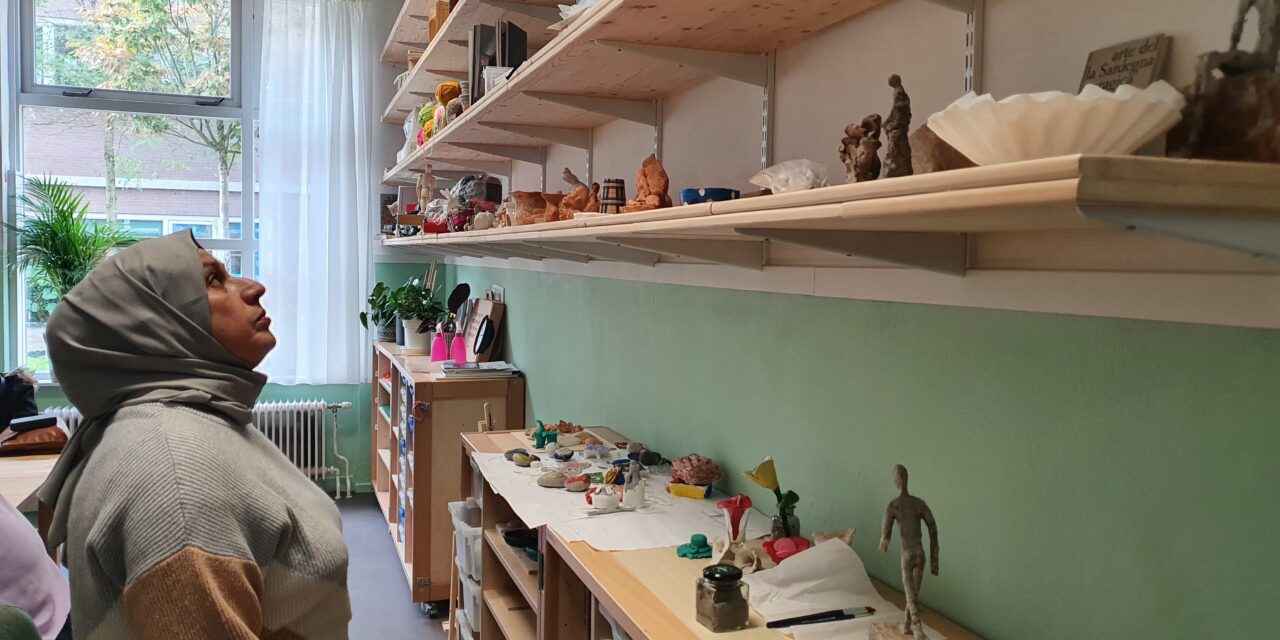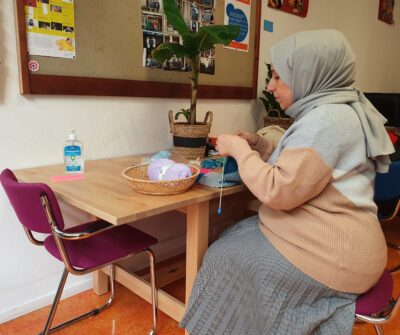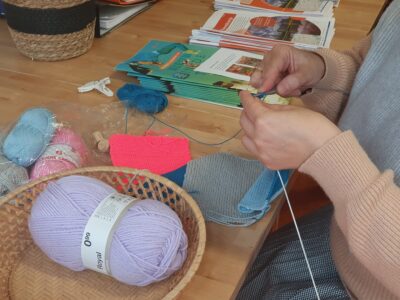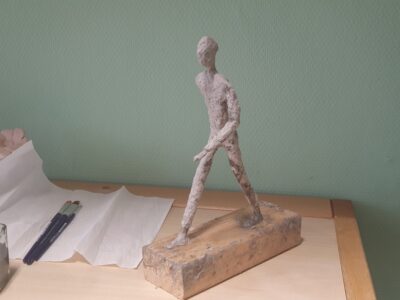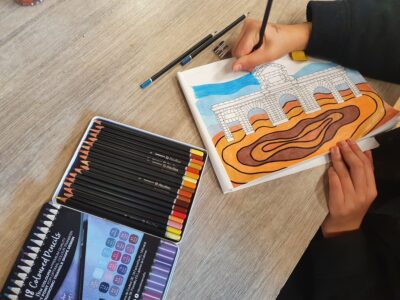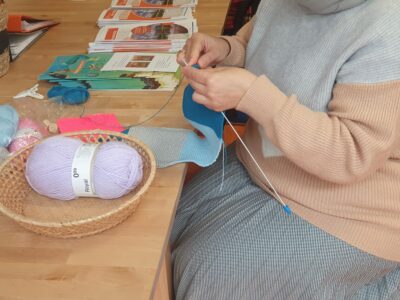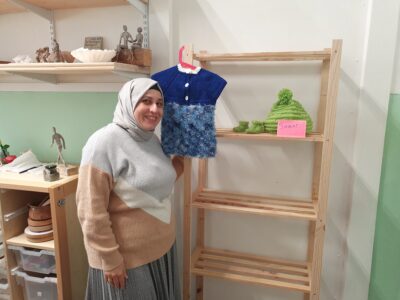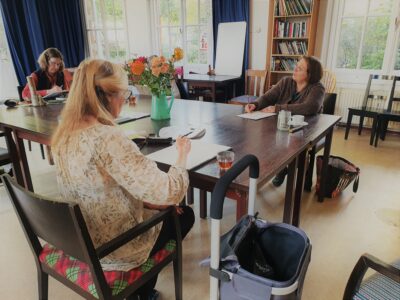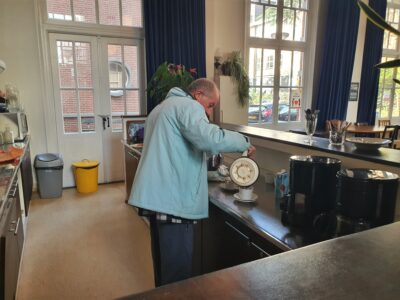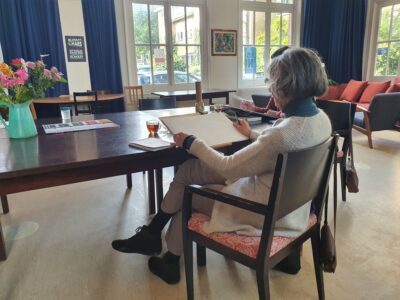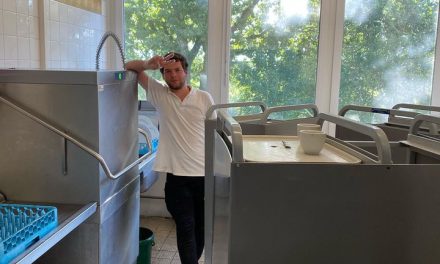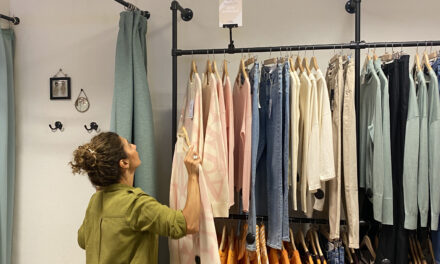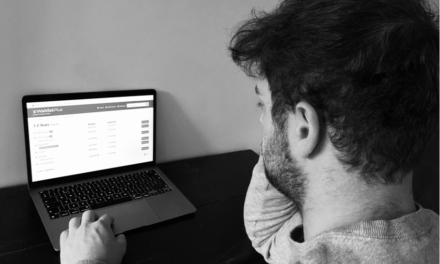A Syrian woman in her fifties is laughing with another woman in hijab at one end of the table. At other end there is a group of half a dozen people quietly focussing on their work. Only occasionally some of them make remarks that gets a couple of laughs from the other participants. They are making little figures out of clay. The more skilled ones are working on pieces of art the others are trying to make things as simple as a bowl. Other participants are knitting simple pieces of clothing out of string that the atelier has provided them with.
They are all visitors of the Atelier 77, a community arts centre in the south of Amsterdam. Here people of all age groups and backgrounds can participate in all kinds of art projects together. And participation is the main goal of the relatively new initiative that has started only in April, says Saskia van der Aa the social worker currently running the program there.
The foundation she is working for “Dynamo” has asked people in their neighbourhood what it lacked most, and inclusion was the answer they had gotten. So they are trying to provide through art. But the feeling of isolation and detachment from the community that created this need for is nothing that is restricted to the south of Amsterdam or even to the Netherlands.
It is a much more a European phenomenon. So much so that the European Commission has brought the ESF+ on it´s way a 99 billion heavy fund that is supposed aid the social recovery from covid-19 by supporting initiatives that are promoting social inclusion tackling youth unemployment or providing skill-based training. It is a massive bucket of cash that is poured over the maze that is social funding.
One of the organisations that might be eligible for funding from this fund is the Buurtsalon Jeltje, a half charitable half commercial foundation that provide a space to various different organisations. Some of them charities some not. This works only because they charge their commercial customers up to four times of what they take from their social clients or “the birthday parties are financing the drawing lesson for the elderly” as Ian Velthuis, one of the volunteers puts it. So far this enables them to function without additional funding even vgthough they might not have to anymore in the future.
